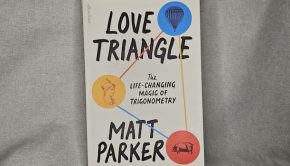A Day in the Life of the Brain Book Review
Summary: A Day in the Life of the Brain Book is a very insightful and at times philosophical book that is backed by scientific facts
4
Insightful
This insightful book about our brain is written by world-renowned neuroscientist Susan Greenfield who takes us on an amazing journey in what makes us tick and how we link the physical world and its experiences with our consciousness. Best of all, Greenfield ensures that A Day in the Life of the Brain can be read by a variety of different people and no advanced understanding of psychology or physiology is required. Sure, a few things do require a little thought but she uses real-world examples like walking a dog to dreaming which are linked to our complex neural pathways. Furthermore, there is also an element of philosophy used in the book which is a unique way of looking at our consciousness.
Of course, the main theme of this book is consciousness which is the state of being aware of and responsive to one’s surroundings. Greenfield explains consciousness as throwing a stone into a pond, whereas the stone is our experience and the pond is the chemical world of our brains. This affects our consciousness on a number of different levels from the force of the throw to the ripple effects of the stone hitting the water. It’s quite an interesting perspective that helps links the examples, theories and experiments of Greenfield to that of our consciousness.
Given that, Greenfield’s theory interprets consciousness as variable that is dependent on a number of factors like our age, health or even what we’re doing during a certain part of the day. These ripples can also strengthen neural pathways or for those with mental health issues, their interpretations may be completely different with no relevance attached. Therefore, consciousness is not an on or off process but rather a wide spectrum of awareness that comes and goes with the activities or experiences of what we are doing during the day.
Greenfield goes on to explain that our consciousness is transient, involving fluctuating cells that she labels as assemblies. These assemblies are like dimmer switches that are activated by stimulation which generates that experience. Constant repetition of certain activities may influence our consciousness differently but it’s all linked back to our cells and how they communicate inside our brains. This theory is linked to empirical evidence performed by Greenfield on rats. When one cell in the brain of a rat was stimulated, it would cause a ripple effect to the cells around it which would mimic the human brain as well.
It’s also interesting how she believes that certain events during our day such as breakfast will overstimulate our consciousness due to the ritual of breakfast that may include sight, taste and smell. This is a similar process to sensations such as a sex or music which will increase our awareness of the activity. On that note, I guess the analogy of ‘we are the sum total of our experiences’ rings true with Greenfield’s A Day in the Life of the Brain. Nonetheless, this book is quite an interesting journey into what makes us tick.
Final Thoughts?
A Day in the Life of the Brain is a well written book that explores consciousness in some very thought provoking and philosophical ways. Greenfield succeeds at explaining her theories and highlighting the complexities of the brain that are once again linked to real-world examples. At times, it is a little ‘deep’ but for the majority, it’s quite an insightful and novel look at what is consciousness and ‘I think therefore I am’.
If you’re interested in the brain and more importantly what is consciousness, check out this book by Susan Greenfield.











